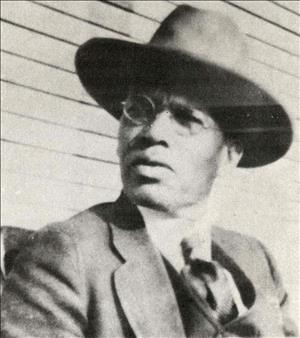El 7 de junio de 1910 el Juez Boyd J. Tallman de la Corte Suprema del Estado de Washington confirma la resolución legal que establece que Samuel Stone y su esposa Susie Stone, una acaudalada pareja de raza negra, podrían adquirir una propiedad en el exclusivo Distrito Mount Baker Park. El promotor inmobiliario del distrito, Hunter Tract Improvement Company, había entablado juicio contra el matrimonio Stone y el anterior propietario del terreno, con el fin de revertir el contrato de compra. Debido al color de piel de la pareja, la compañía alegaba que la presencia de los Stone podía comprometer el valor inmobiliario de los terrenos circundantes. Luego de ganar el caso de la corte original y la apelación, los Stone proceden a construir su residencia en 3125 34th Avenue S, pero la acción legal representó la necesidad creciente de luchar contra la discriminación institucional, incluyendo los convenios restrictivos.
El 7 de junio de 1910 Samuel y Susie Stone ganan una batalla legal por el derecho a vivir en el exclusivo Distrito Mount Baker de Seattle.
- By Kathleen Kemezis
- Posted 9/08/2010
- HistoryLink.org Essay 9570
Sources:
Richard Berner, Seattle in the 20th Century, Vol. 1 (Seattle: Charles Press, 1991); Esther Hall Mumford, Calabash: A Guide to the History, Culture, and Art of African Americans in Seattle and King County (Seattle: Anase Press, 1993); Shaping Seattle Architecture ed by Jeffrey Ochsner (Seattle: University of Washington Press, 1994); Quintard Taylor, The Forging of a Black Community: Seattle’s Central District, from 1870 through the Civil Rights Era (Seattle: University of Washington Press, 1994); Esther Hall Mumford, "Seattle's Black Victorians -- Revising a City's History," Portage Vol. 2, No. 1 (1980-1981), p. 14-17; HistoryLink.org Online Encyclopedia of Washington State History, “Seattle Neigborhood: Mount Baker -- Thumbnail History” (by Junius Rochester), http://historylink.org/ (accessed July 1, 2010); Carol Tobin, "Mount Baker Historic Context Statement," May 1994, City of Seattle, Department of Neighborhoods; “Another Phase of Negrophobia,” Seattle Republican, November 9, 1910, p. 1; Horace Roscoe Cayton and Ed Diaz, Horace Roscoe Cayton: Selected Writings (Seattle: Bridgewater-Collins, Publisher, 2003), 60; “Only The Negro Not Wanted,” Seattle Republican, April 9, 1909, p. 5; “Negress Wins Suit in Highest Court,” The Seattle Daily Times, June 8, 1910; “Negroes May Carry Case to Washington,” Seattle Daily Times, November 29, 1909, p. 6; “Wife of Prominent Negro in Seattle,” Seattle Daily Times, September 14, 1909, p. 9; Hunter Tract Improvement Co. v. Stone et al, 109 P 112 (1910).
Licensing: This essay is licensed under a Creative Commons license that encourages reproduction with attribution. Credit should be given to both HistoryLink.org and to the author, and sources must be included with any reproduction. Click the icon for more info. Please note that this Creative Commons license applies to text only, and not to images. For more information regarding individual photos or images, please contact the source noted in the image credit.

